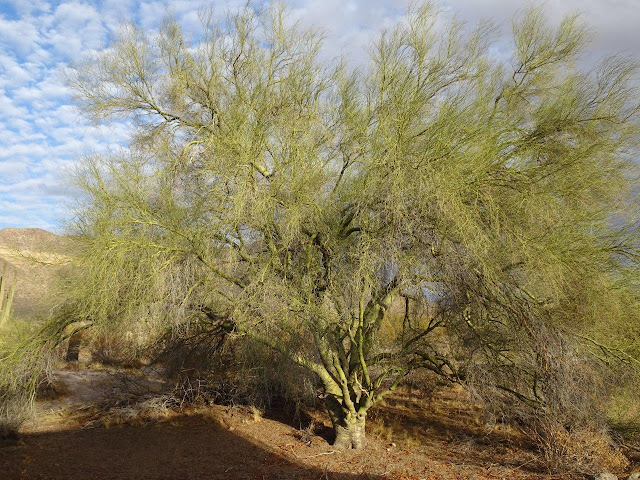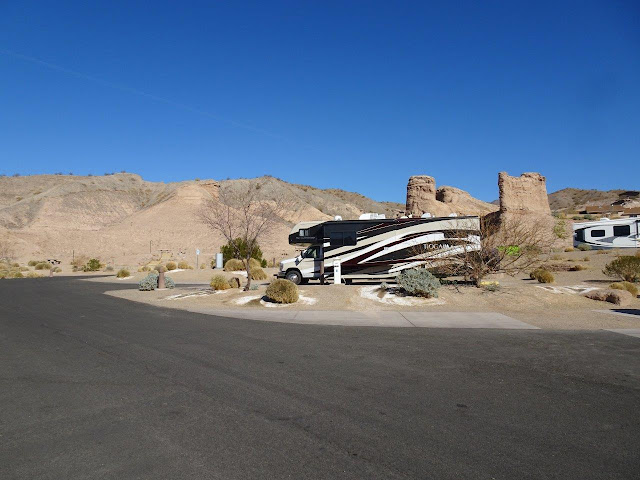This is one of nicest of the Maricopa County regional parks, but I had only five days here and most of it was cold and rainy, and one day was even cold and snowy, so I did not have much time to walk around and enjoy it. However, I have been here before, so that is OK. I had work to do, so was happy to stay inside where it was warm.
Even though I got a late reservation, this spot was not too bad. Only problem was backing in and then turning, so as to not hit the cement picnic table while still lining up for the electric and water connections. It took me several tries, however. Nice and sunny this first day, but the clouds are gathering.
This tree is a palo verde. The name literally means "green stick." When it is very dry, desert plants have to conserve water, and leaves allow a lot of water to evaporate, so this tree has almost no leaves, especially in winter. But the bark has green chlorophyll and still uses the sun to produce food for the tree.
This is a creosote bush. It has very tiny leaves and if you pour water on it, it will smell like burning rubber.
One good thing about this campground is that sites are very nicely spread apart, so you have a feeling of privacy.
The mountain in the distance is known as slash mountain, for an obvious reason. The slash is really a rock ledge that interrupts the slope of the mountain.
This is a huge cholla bush. Some people call it a "jumping cholla" because the hanging buds catch on anything that passes by or steps on them. If you take a dog for a walk in the desert, watch out for this bush and buds on the ground because you will be pulling thorns out constantly. Some people take needle-nose pliers when they go for walks.
Nice bunch of saguaro behind my campsite. Any saguaro with arms is at least 100 years old. Some of these are between 150 and 200 years old.
Some sort of barrel cactus, but with red thorns.
This is an ocotillo. It will have bright red flowers on the tip of every branch later in the spring. You can see either an old flower or a bud on a couple of branches. It also has very tiny leaves.
The next few photos are taken a day or two later. After it had rained for several hours, it started to snow--hard! In fact, you should be able to see Slash Mountain in the distance, but it is obscured with snow!
Amazing! And these were big flakes, but most melted as they landed.
It took several hours to melt, but I was happy to be inside where I had two little electric heaters and my furnace running!



























































